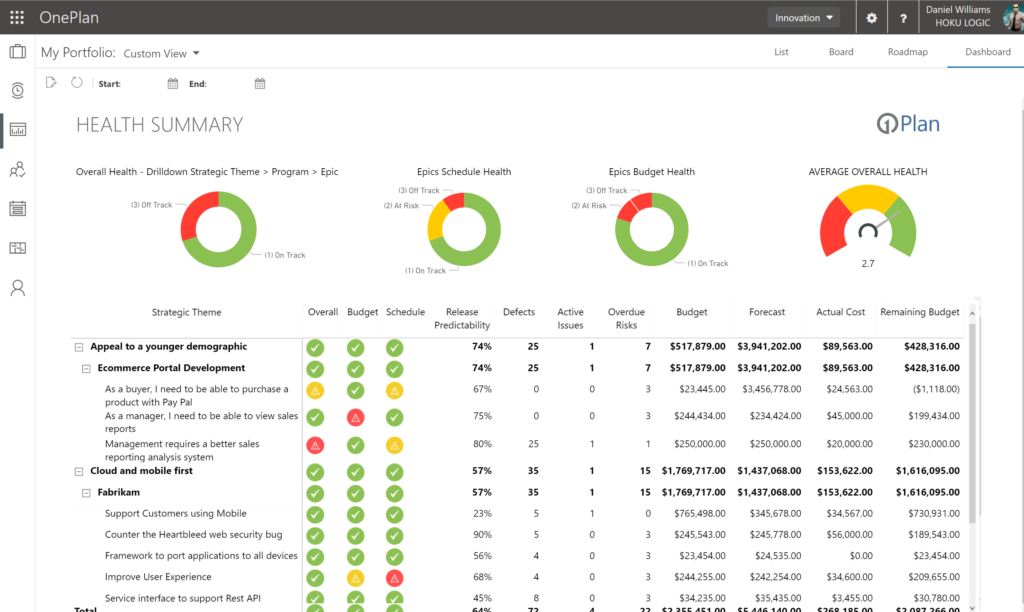Many organizations are in annual planning mode. Depending on your fiscal calendar, you may find yourself asking common questions around strategic planning and the best practices supporting it. Whether you have a collection of project proposals, or a list of half-baked ideas, how do you go about setting priorities, selecting the work that matters most, planning your budget and aligning your resources optimally to get the most work done? That’s where strategic portfolio management comes in.
The PPM Lifecycle
OnePlan can help you deliver on business strategies through high impact outcomes. The PPM life cycle can be broken down into many phases, but let’s start off simple; let’s look at ideation, planning and execution.
Ideation
In the ideation phase, ideas are collected and, in many cases, voted on by the employees. This is a critical aspect of strategic planning – gathering ideas from across the organization. Think about it, what are the chances that across 300 employees you will have more innovative ideas than across those involved in strategic planning only? Open the brainstorming up to everyone, and don’t be afraid to consume new ideas from those who are removed from the process. In many cases, these are the individuals that are touching the customers every day and may have the best ideas for solutions to resolve their biggest pain points. In addition, you may have a project request process in which stakeholders can propose work that they feel is important for your upcoming roadmaps. Now that you have a bucket of proposed work and creative ideas, how can you plan in an intentional, data-driven way?
Planning
The best way to prioritize your proposed ideas and projects is to rank them based on KPIs that mean the most to your business. For example, here are some questions you may want to ask to generate an overall priority score that you can then use for portfolio ranking.
- Does it align with strategic objectives?
- Is it required for compliance or regulations?
- Does it increase customer satisfaction?
- Does it reduce company spend?
- Does it impact developer productivity?

Take your bucket of ideas, prioritize them against company KPIs using the process above, and then apply high level resource and cost estimates to complete your planning process. Resource estimates are typically done at the role level and then of course, you will have your other costs such as hardware, software, hosting, etc.

Execution.
Once you’ve gathered ideas, prioritized the work and completed your estimates, you are ready for execution. Delivery is what can separate you from your competition. You can plan an award-winning portfolio that can put you light years ahead of your biggest competitors, but if you can’t deliver it, all the work you put into planning won’t make much of a difference. Key tips for execution:
- Plan the work ahead but be prepared to be agile – the ability to shift priorities based on the market trends and customer needs is crucial
- Make sure you know where you came from – in order to track progress, you have to know where you began. Don’t forget to measure BEFORE and AFTER your initiative
- Know the end game – always know what constitutes success for the project. For example, fill in the blank – this project will be deemed successful if__________
- Measure everything – what metrics will change based on project delivery? If you are implementing a new automated phone system, you could measure TNPS, transfer rates, or containment for example

Now you’re ready to get started on planning your most successful year yet!

